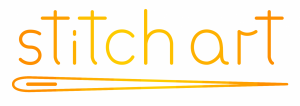From Design to Stitch – Translating Elizabethan Roundels
By Ann Hall
The Tudor period in English History has always fascinated me, not only for the colourful and intriguing details of the King’s and Queen’s but the wonderful designs of their clothes, buildings and objects in their houses and palaces, especially surrounding the people of influence and importance.

Highly prized and valued, they were made of sycamore wood, approximately 5 inches (12.5cm) in diameter and 1/4 inch (2mm) thick. Each one was made by hand, and each design brightly painted and gilded with gold leaf. The plain side was used to serve sweetmeats and sugarplums at the end of a meal, and the verses were recited or sung as entertainment.
As a calligrapher I set out to recreate the designs and at each step appreciating the work of the craftsmen who created these works of art. This culminated in me relating my journey through the delights and charms of these beautiful objects by publishing a book and telling my story.
Not content with this I decided to develop some of the designs into stitch, another of my interests. The designs were simple and easy to transpose onto graph paper. I used computer generated software, but is it just as easy to hand draw and colour the designs. As the designs were repeated into circles of 1/2 or 1/4 sections it was straightforward to work by enlarging them and joining them up to form a circle. Because the designs are made up of curves, the stitches used are of whole X, 1/2, 3/4 and 1/4 squares. Each pattern is finished with red backstitch outlining, with two circles of backstitch completing the border.
As this design was repeated into circles of 1/4 sections it was straightforward to work by enlarging and fitting them together onto the fabric. Because the designs are made up of curves the stitches used are of whole X, 1/2, 3/4 and 1/4 stitches in each square.
Transferring the design to graph paper.
Outlines – all in backstitch. The outer two circles are stitched in black; the inside circle in one strand of thread, the outside circle in two strands. All other outlines are in red, stitched with one strand of thread. The decorations on the outer ring of gold are worked in one strand over the cross stitches. It may be easier to use a needle with a sharp point as these stitches are worked over several layers.
The fabric used should have an even weave, preferably no smaller than a count of 18 strands to the inch. Choose a colour to simulate sycamore. The embroidery thread used is DMC 666 (red), 895 (green), 783 (yellow), 3046 (gold) and white with 310 (black) used for the border. You can now see the finished embroidery using cross stitch below. The frame needs to be at least 6 inches, preferably a round one.
Where the text is on the original Roundels, replace it with the Tudor Rose design below. Transfer to graph paper in the same was as before.
Taken from the book Elizabethan Roundels by Ann Hall
First published 2012
All text and images are copyright – © Ann F Hall 2012
ISBN 978-0-9563617-7-6



